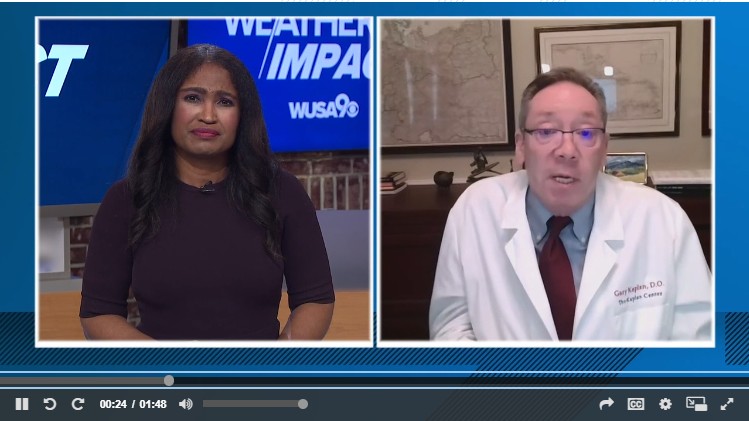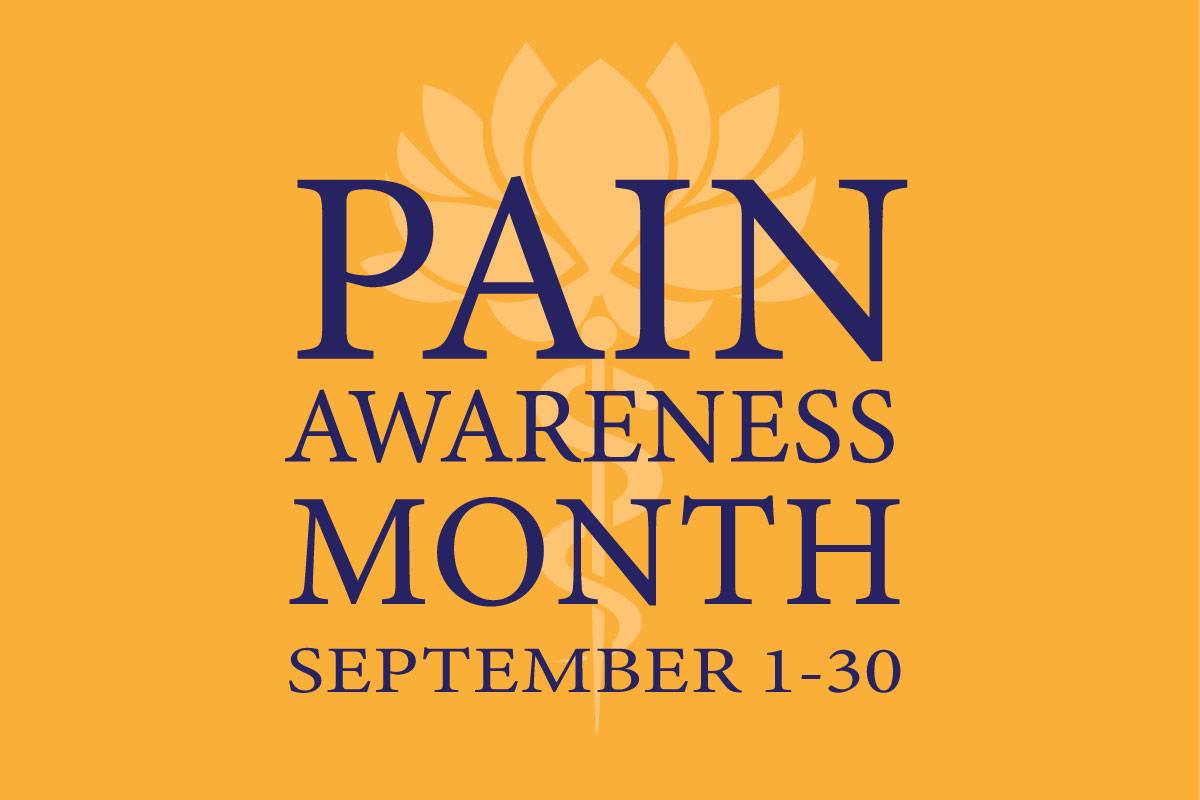
5 Ways We Can Keep Your Immune System Strong
December 10, 2025/by Kaplan Center
Want to Take Your Workout to the Next Level Next Year? These Tips Can Help
December 8, 2025/by Kaplan Center
Dr. Kaplan’s Dos and Don’ts of the Holiday Season
December 3, 2025/by Kaplan Center
Let’s Talk Webinar – A Root Cause Q&A
December 2, 2025/by Kaplan Center
Navigating Holiday Meals with Gut Issues: Simple Tips for a Comfortable Season
December 1, 2025/by Chardonée Donald, MS, CBHS, CHN, CNS, LDN
Craniosacral Therapy for TMJ | Say Goodbye to the Daily Grind
November 19, 2025/by Patricia Alomar, M.S., P.T.
From Compassionate Care to Personal Healing: A Letter to My Patients
November 18, 2025/by Kaplan Center
8 Steps to a Healthier Gut—and a Longer, Healthier Life
November 18, 2025/by Kaplan Center
Mid-Life Irritability & Fatigue Improved by Hormonal Balancing
November 13, 2025/by Lisa Lilienfield, MD
From Challenges to Change: Dr. Kaplan on Healthcare’s Biggest Challenges
October 29, 2025/by Kaplan Center
Overlooked Dangers of Mold Exposure and How to Stay Safe – Dr. Kaplan Talks to WUSA9
October 27, 2025/by Kaplan Center
Let’s ‘Fall’ Into Wellness: A Nutritionist-Approved Immune-Boosting Recipe for Cold and Flu Season
October 13, 2025/by Chardonée Donald, MS, CBHS, CHN, CNS, LDN
PANS/PANDAS – When Sudden Symptoms Signal Something More
October 9, 2025/by Kaplan Center
Beating Burnout, A Nutritionist’s Perspective
October 1, 2025/by Chardonée Donald, MS, CBHS, CHN, CNS, LDN
3 Things That Can Happen After Stopping GLP-1s
September 11, 2025/by Chardonée Donald, MS, CBHS, CHN, CNS, LDN
What Families Need to Know About COVID and Flu Season
September 3, 2025/by Kaplan Center
September is Pain Awareness Month
September 1, 2025/by Kaplan Center
Dr. Kaplan Spoke to Northern Virginia Magazine About COVID, Flu, and Immunity — Here’s What You Should Know
August 14, 2025/by Kaplan Center
“Why Do I Feel Like Crap?”: The Overlap Between Long COVID and Perimenopause
July 30, 2025/by Kaplan Center
Why People Are Turning to EMDR (and Why You Might Want to Too)
July 23, 2025/by Kaplan CenterAre you looking to improve your overall wellness?
Personalized care you can trust.
Our integrative, non-surgical treatment approach is highly successful in maintaining wellness and also treating chronic pain and illness. For more than 30 years, we have delivered superior, cutting-edge health care in the Washington, DC area.
QuickLinks
Contact Information
Tel: 703-532-4892
Fax: 703-237-3105
6829 Elm Street, Suite 300
McLean, Virginia 22101
Map It
Hours of Operation
Mon – Thu : 8 am – 5 pm, ET
Fri : 8 am – 12 pm, ET
Why You Should Get Your Shingles Vaccine
/in Treatments/by Lisa Lilienfield, MDAccording to the Centers for Disease Control, almost 1 out of 3 people in the United States will develop shingles during their lifetime. Shingles is a painful viral infection caused by the varicella-zoster virus, the very same virus that causes chickenpox. The reason for this is that the virus never completely leaves the body, instead, it remains inactive in nerve tissue near your spinal cord and brain and years later it may reactivate as shingles.
What do you need to know?
Who should get the vaccine?
Adults over 50 years old who:
If you meet the criteria above or have questions about the vaccine, talk to your primary care physician right away.
Getting vaccinated will significantly reduce your risk of getting shingles and the complications that it may cause.
If you have questions about the Shingrix vaccine or if you are not sure if you are a good candidate, ask them if it’s right for you. You can also visit https://www.cdc.gov/shingles/index.html for more information from the CDC.
If you currently have shingles and would like to talk to a nurse about our treatment protocol, call us today at 703-532-4892.
Let’s Talk Sex, Let’s Talk O-Shot®!
/in Treatments, Women's Health/by Lisa Lilienfield, MDIt is estimated that up to 15% of married couples either have no sex or have sex less than 10 times per year. While some couples claim to still have a close, fulfilling relationship without sex, the majority of one or both partners in a couple are unhappy with the state of affairs.
There are many reasons why sex can decline in a relationship. The demands of being a parent, financial stress, medications, illness and declining hormone levels resulting in a decrease in desire and increase in painful intercourse, are a few causes of declining sexual activity.
Now, a new treatment is available at our clinic called the O-Shot® that uses Platelet Rich Plasma (PRP) to revitalize tissue so sex can be more enjoyable.
What are the benefits of the O-Shot® for women?
Women who have received the O-Shot® injection report an increase in vaginal sensitivity and enhanced orgasm, as well as more frequent and more intense orgasms! Other benefits include improvements in vaginal dryness, painful intercourse, and urinary control.
O-Shot® Benefits:
The O-Shot® can increase your desire and sensitivity for sexual activity, helping you restore the intimacy that you and your partner have missed out on.
After receiving the O-Shot® women report improved ability and stronger, more frequent orgasms.
By stimulating tissue growth, natural lubrication is improved which in turn makes intercourse less painful. Rejuvenation of your genital tissue also results in improvements in urinary control.
The O-Shot® injection is a safe, effective, drug-free, and non-surgical procedure. What’s even better is that there is NO recovery time and results can last a year or more!
What is Platelet Rich Plasma and what does it have to do with sex?
Platelet Rich Plasma is a substance in your own blood that contains a tremendous amount of growth factors. It has been used for years in the orthopedic world to repair cartilage, ligaments, and tendons and now it is available for many other uses, including improving vaginal and sexual health.
Questions? Give Us a Call!
703-532-4892 x2
What can I expect from the O-Shot® procedure?
After a blood draw, the patient’s own PRP is separated from white blood cells. After receiving a local anesthetic, the PRP is then injected to the genital tissue and the natural growth factors in the PRP begin to work right away, stimulating tissue repair and rejuvenation. The O-Shot® is a safe and relatively painless procedure, even though the thought of a needle down there can seem scary!
How can the O-Shot® change my life?
If one or both partners want a change, starting with communication is key. Expressing one’s desire to be more intimate can begin to improve the relationship right away. Planning date time together without distractions is also essential, resulting in the space to talk and share feelings.
The O-Shot® procedure has helped countless women strengthen their sexual relationships while boosting confidence and self-esteem. Being proactive in your sexual and urinary health is a big step, but well worth the effort.
If the desire to change and be more intimate is there but there are physical issues, working with a doctor to test hormones and to rule out other conditions like diabetes and cardiovascular disease is important.
If you are interested in learning more about the O-Shot®, please contact us for more information.
Lisa Lilienfield, M.D.
Certified provider of the O-Shot®
Call Today: 703-532-4892, ext. 2
Glutathione: Master Antioxidant, Detoxifier, and Immune Booster
/in Mental Health, Nutrition, Treatments/by Kaplan CenterIn recent years, there has been increasing interest in glutathione (GSH) and the role it plays in the progression and treatment of a wide variety of illnesses and conditions.
Glutathione is the most abundant, and arguably the most important, antioxidant in the body. Several biological processes rely on it to perform optimally, but levels diminish as we age, opening the door to premature cell death, aging, and age-associated diseases and conditions.
Glutathione is critical for the detoxification process.
Low glutathione compromises liver function, which works to flush the body of damaging free radicals. Free radicals, like reactive oxygen species (ROS) and reactive nitrogen species (RNS), are naturally occurring, toxic compounds that are formed when the body converts food to energy. They roam freely, targeting and altering different types of molecules in the body through an exchange of electrons. In ideal circumstances, free radicals are kept in check by antioxidants that prevent them from causing damage.
However, when the scales tip in their favor free radicals can cause significant damage to our cells and our DNA. The result is oxidative stress (OS) which is linked to numerous disease processes including cognitive decline (Alzheimer’s disease) and other age-related conditions like cancer, cardiovascular disease, and diabetes.
Closely tied to this is glutathione’s role in mitochondrial survival.
Mitochondria are responsible for creating cellular energy and they are directly linked to the pathways of cellular death. Without adequate levels of glutathione cellular health and longevity are compromised.
Over time, toxins, poor diet, medications, infections, and stress all contribute to depleting levels of glutathione.
Without enough of it in our cells we become “unbalanced” in terms of inflammation and anti-inflammation. When the body’s normal cycle of destruction and repair tips more towards destruction and moves away from repair we see disruptions in the proper functioning of the immune system, we see an increase in inflammation, and we see an increase in neuropsychiatric and neurodegenerative diseases, such as Alzheimer’s disease, Parkinson’s disease, depression, ME/CFS, and fibromyalgia.
Questions? Give Us a Call!
703-532-4892 x2
Optimize Glutathione Levels With IV Therapy
Vitamin and mineral IVs are a wonderful way to deliver and replenish vital nutrients to the body. By bypassing the digestive system, you get maximum absorption into the bloodstream and maximum bioavailability. Glutathione has shown it can cross the blood-brain barrier (BBB) and can, therefore, be an important tool in preventing and treating neurodegenerative conditions.
Some of the benefits of glutathione IV supplementation include:
Bottom line: Increasing glutathione is one more way to slow down the aging process, encourage recovery, prevent disease, and maintain optimal health.
We are here for you, and we want to help.
Our goal is to return you to optimal health as soon as possible. To schedule an appointment please call: 703-532-4892 x2
References:
Ballatori N, Krance SM, Notenboom S, Shi S, Tieu K, Hammond CL. Glutathione dysregulation and the etiology and progression of human diseases. Biol Chem. 2009;390(3):191–214. doi:10.1515/BC.2009.033
Mol Neurobiol. 2014 Dec;50(3):1059-84. doi: 10.1007/s12035-014-8705-x.
Forman HJ1, Zhang H, Rinna A. Glutathione: overview of its protective roles, measurement, and biosynthesis. Mol Aspects Med. 2009 Feb-Apr;30(1-2):1-12. doi: 10.1016/j.mam.2008.08.006.
Ribas V, García-Ruiz C, Fernández-Checa JC. Glutathione and mitochondria. Front Pharmacol. 2014;5:151. Published 2014 Jul 1. doi:10.3389/fphar.2014.00151
Mytilineou C1, Kramer BC, Yabut JA. Glutathione depletion and oxidative stress. Parkinsonism Relat Disord. 2002 Sep;8(6):385-7.
Aoyama K1, Nakaki T. Impaired glutathione synthesis in neurodegeneration. Int J Mol Sci. 2013 Oct 18;14(10):21021-44. doi: 10.3390/ijms141021021.
Hirrlinger J1, Gutterer JM, Kussmaul L, Hamprecht B, Dringen R. Microglial cells in culture express a prominent glutathione system for the defense against reactive oxygen species. Dev Neurosci. 2000 Sep-Dec;22(5-6):384-92.
Kannan R, Kuhlenkamp JF, Jeandidier E, Trinh H, Ookhtens M, Kaplowitz N. Evidence for carrier-mediated transport of glutathione across the blood-brain barrier in the rat. J Clin Invest. 1990;85(6):2009–2013. doi:10.1172/JCI114666